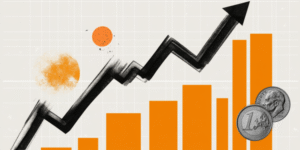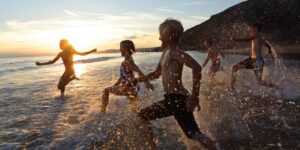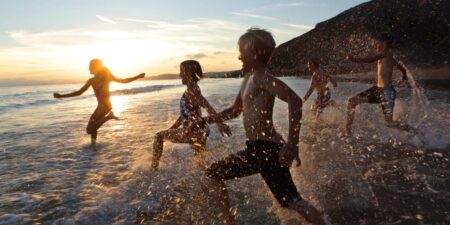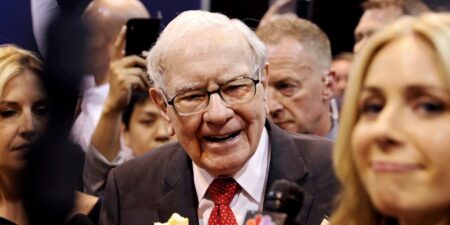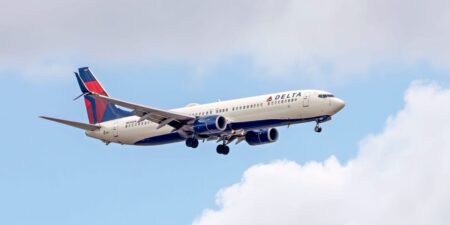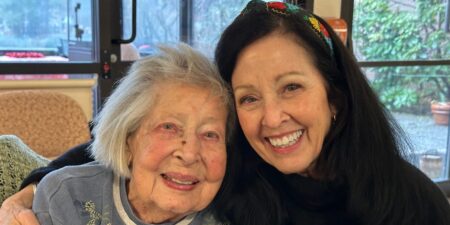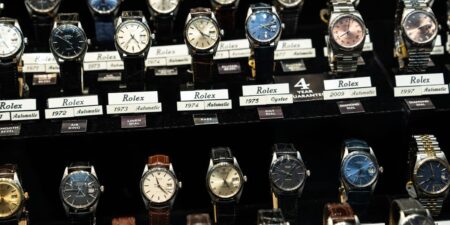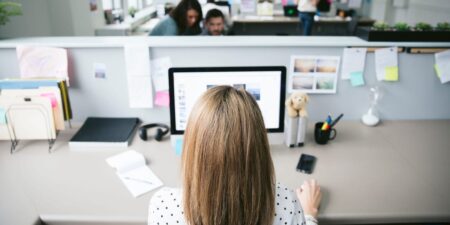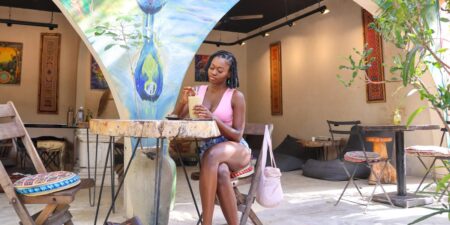X
Copy link
Impact Link
Save
Saved
Read in app
subscribers. Become an Insider
and start reading now.
Have an account? .
- I visited Seattle for the first time in May 2025 after years of dreaming about it.
- The city in the Pacific Northwest surprised me as a New Yorker.
- I found a strange tourist attraction, a free banana stand, and a tech neighborhood full of nature.
When my train arrived at Seattle’s King Street Station on a sunny morning, I didn’t expect the one-mile walk to my downtown hotel to feel like a hike.
I didn’t think I’d find a chewing-gum-speckled wall in an alley later that afternoon. And when I felt my stomach growl while strolling the bustling streets the next day, the last thing I thought I’d see was a free snack cart.
It was my first time in the Washington city, one I’ve wanted to visit since I was a kid. As I developed a taste for travel in college, I found myself taking road trips from California up the coast to Portland, Oregon, to see more of the Pacific Northwest.
Still, Seattle was always too far north to include in my itinerary. In fact, I’d never had a chance to visit the state of Washington — until recently.
During a weeklong trip from my home in NYC to the west coast of North America in May 2025, I spent three days in Seattle. As a first-time visitor, I found the city to be full of surprises.
I traveled to Seattle from Vancouver, and I was surprised to find that a train ticket was less than half the price of airfare.
I’ve spent about 100 hours on Amtrak trains from the Northeast to the Southwest. In my experience, traveling by train in the US is typically more expensive than flying, though it depends on the route.
So when I was booking my travel from Vancouver, British Columbia, in Canada to Seattle, I was shocked that a coach train ticket cost $50 compared to the $150 basic economy airfare on the same day.
I certainly paid more in hours — the train ride took four compared to the roughly 1-hour flight. Still, I was excited to travel slowly and watch landscapes transform from one country to another.
I was also shocked at how much more comfortable it was to travel in economy compared to planes.
I’d traveled in first and business class on Amtrak trains before, but this was my first trip in coach since I was a kid. So I wasn’t sure how it would compare to my countless experiences flying in basic economy.
Since the ticket was less than half the price, I didn’t expect the train seat to be so much cozier than the stiff, flimsy plane seats I’m used to. I even avoided the neck and back pain I usually get when flying.
On the train, the seats felt wider with more legroom than on a typical economy flight.
Walking a mile in Seattle feels more strenuous than it does in New York.
I stepped off the Amtrak train in Seattle around noon. It was my first time stretching my legs since I’d boarded in Vancouver four hours earlier. With an indie-rock soundtrack in my earbuds and the sun shining above me, I was excited to lug my suitcase on foot to my hotel one mile away.
But I quickly learned that a mile in Seattle doesn’t feel like a mile in New York. The route was almost entirely uphill. When I stopped to catch my breath at an intersection, I noticed the street to my right climbed up even taller for as far as I could see.
In my city, I walk a lot, but most of the roads are relatively flat. So I wasn’t expecting to feel so exhausted after just one mile.
I was excited to visit the iconic Pike Place Market but surprised to learn that it hasn’t always been a car-free space.
Situated next to the coast in Downtown Seattle, Pike Place Market is an iconic outdoor market with over 200 stores and restaurants. I’ve been hearing about it for decades, so I spent my first afternoon in Seattle perusing the nine-acre shopping hub.
On a sunny Thursday afternoon, the market was crowded with locals and tourists alike. I shuffled my way through what felt like a line to get a peek at the fresh seafood. When I needed a break from the mob, I found refuge inside a used bookstore.
Every so often, a delivery truck would drive through, dividing the crowd into two tightly packed globs, but most cars weren’t allowed to drive through Pike Place Market. This made sense to me, since each passing vehicle halted the pedestrian flow.
But I was surprised to learn that the open-air market’s cobblestone streets are normally open to all cars — the city is testing a ban on cars aside from vendors, delivery drivers, and those with disabilities, the Seattle Times reported in April. The temporary ban began on April 23 and will continue until the end of summer.
I was lucky enough to inadvertently schedule my trip during the ban. I couldn’t imagine what it would be like if cars could freely move through the already crowded market.
I stumbled upon the popular tourist attraction, The Gum Wall, in Seattle.
While wandering the narrow alleyways around Pike Place Market, I was slowed down by groups of tourists stopping to take selfies in front of a vibrant brick wall. The wall was spackled with an array of hues from peach to periwinkle.
At first, I thought the specks of color were dried-up chunks of paint. But when I saw a pedestrian pull a gooey wad out of their mouth and stick it on the brick wall, I realized the wall was a gum canvas.
I was shocked and a little grossed out upon my realization, but when I focused on how the wall actually looked rather than the germ-infested materials, I thought it was a playful work of art.
Before you ask, no, I didn’t add my own contribution to the Seattle gum wall.
I was surprised to find a three-story target downtown.
I lost my charging port somewhere between Vancouver and Seattle, so I headed to a Target near my downtown hotel. Back home in NYC, the Targets I frequent are small and offer little more than a drug store.
So, I was shocked to learn that this location was a 96,000-square-foot, three-story establishment. While still smaller than Targets you’ll find outside of cities, according to the Seattle Times, the store had a wide variety of groceries, toiletries, and tech products.
There were so many aisles of home goods that I thought I could decorate my entire apartment with its offerings.
I wasn’t expecting the tech neighborhood to be so full of nature.
Seattle has long been known as a tech hub where software engineers move in droves to work at big companies like Amazon and Google.
Locals told me I could find the booming scene in the South Lake Union neighborhood, home of the original Amazon headquarters. The company’s presence in more than 30 office buildings led to the neighborhood’s nickname, “Amazonia.”
Before visiting, I expected to find nothing but business-centric streets lined with glass skyscrapers in a tech-fueled neighborhood. So I was surprised by the large presence of nature in South Lake Union.
The neighborhood borders Lake Union, where I explored a waterfront park filled with runners, bicyclists, picnickers, and geese. Locals said the park is dead on the weekends, but tech workers frequent it during the week. Nearby, the Google building had a whole forest of trees on the rooftop.
I’d never seen a free banana stand before.
The pop of color caught my eye while strolling through “Amazonia. In an outdoor space between Amazon buildings in South Lake Union, the bright yellow trailer is hard to miss.
I got a closer look and saw boxes full of bananas beneath the awning, and a sign that read, “Take one — not just for Amazonians but for anyone in the community.”
I didn’t expect to find a free snack stand in the middle of a city. Amazon previously told Business Insider that founder Jeff Bezos came up with the idea to provide a complimentary healthy snack with no wrapper. The stand first opened in 2015.
I wasn’t expecting to see an active volcano so close to a major city.
From a hotel’s rooftop deck, a local pointed to a mountain in the distance and told me it was an active volcano.
I could hardly see the volcano through the haze, but they told me Mount Rainier, which last erupted in 1894, was more visible on clear days.
I was shocked to learn that this city, home to nearly 800,000 people, is so close to what could be a natural disaster. According to the Seattle Office of Emergency Management, the city is a safe distance away from a potential blast’s flow, but water and power resources could be affected.
My trip to Seattle was everything I hoped it would be and more.
Seattle’s mix of natural and urban lifestyles reminded me of my previous trips to Pacific Northwestern cities, which comforted me.
But I was surprised by Seattle’s unique attributes, from Pike Place Market to the oddly alluring gum wall.
And since it was so different from NYC, I definitely plan to return to Seattle to get another break from the Big Apple.
Read the full article here



